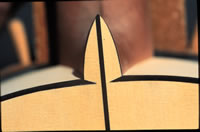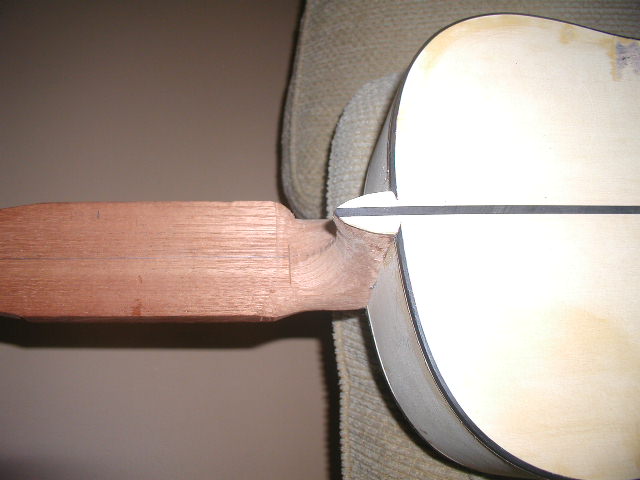Hello everyone,
I'm working on a pair of flamenco guitars. The bodies are Alaskan Yellow Cedar, with ebony bindings. I'm trying to do binding details equivalent to the included picture cribbed from LMII. Luckily, one of the guitars is for me, and my knife technique is improving and hopefully will be cleaner for the second.

I probably have separate questions about the technique for doing this (I'm thinking about grinding a small homemade pairing chisel with a really low bevel angle), but right now I'm wondering how to keep the cedar clean while I do the detail sanding. I saw a discussion about maple bindings on ebony fretboards in the archives, and the suggestion there is that the maple would clean up once a high grit of sandpaper was reached. I don't know if the cedar will be as forgiving so I wanted to ask the question again. Will the original mess clean up at high grits? Should I put a few wash coats of shellac on before I do any sanding?
My apologies to LMI and Les Stansell for the theft.

